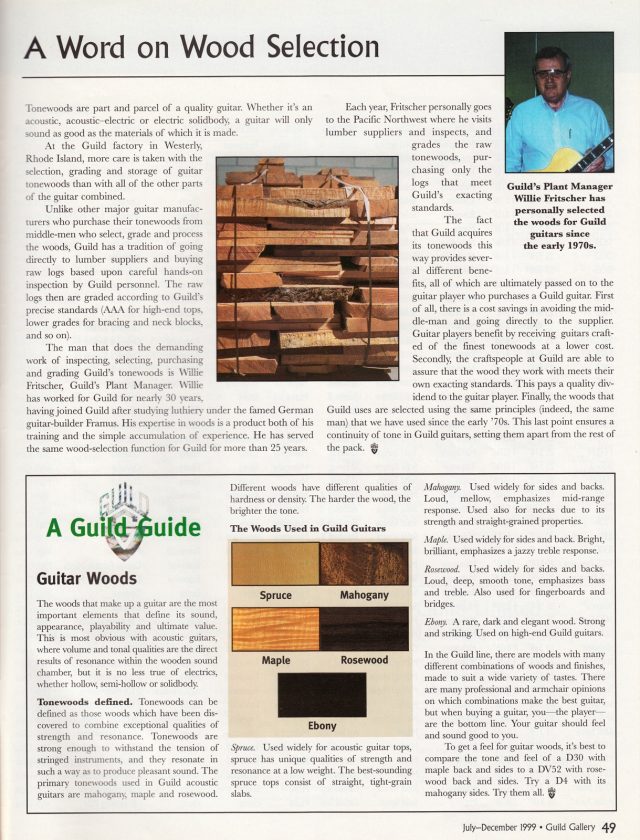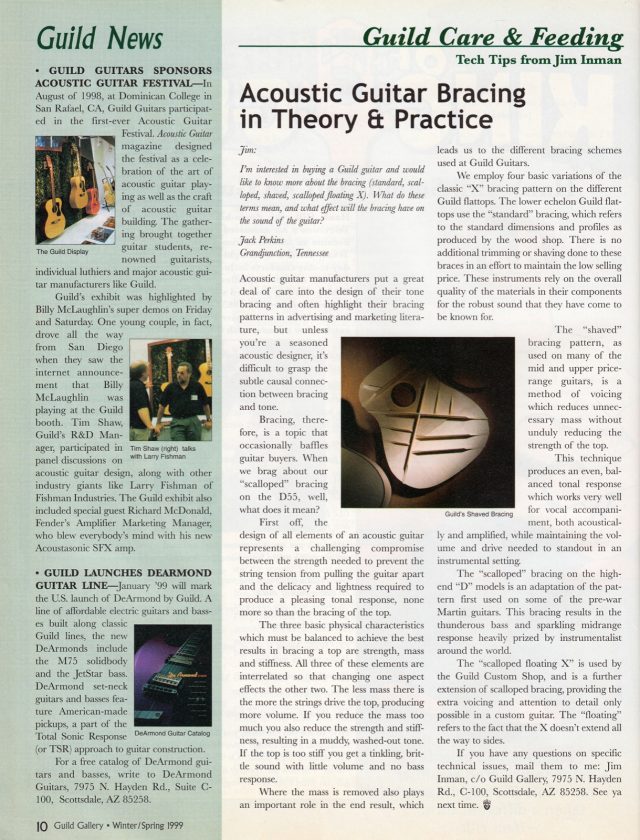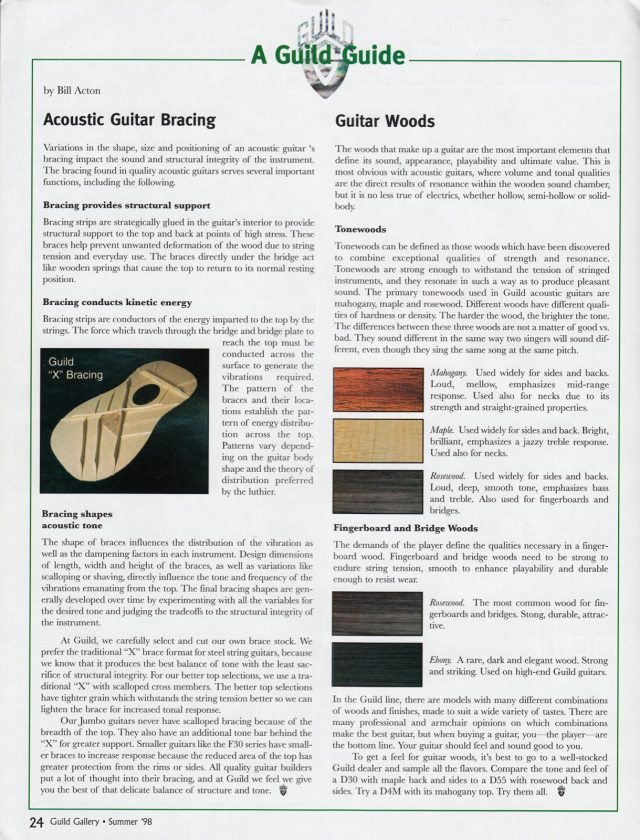donnylang
Member
I know this has been discussed in the past, but the time seems ripe for a new angle:
I’m interested in hearing from folks on their thoughts between the differences in these two models- mostly from the angle of the original designs.
Other threads have pointed out the 1968 (year of D35 introduction) distinctions:
D40- white binding, 3-piece neck, chesterfield logo
D35- tortoiseshell binding, 1-piece neck, plain Guild logo
I believe the very earliest D35s had the same pickguard as the D40, but this was quickly changed to the unique odd-shaped, smaller one by the time of the printing of the 1968 catalog.
So I think this smaller pickguard might offer some insight into what Guild were thinking- I wonder if the D35 was an effort to create a less “Guild”-like dreadnought, and something more along the lines of a D18 or J45.
My ‘68 D35 is noticeably lighter and more resonant than both the ‘68 D40 and ‘67 D44 I had. It also has less of a thumpy/bass heavy sound, and more of a balanced or bright quality. I had a ‘69 D35 as well that also seemed less Guild-like.
I guess what I’m meaning to say here is: for two guitars that mostly seem “the same” on paper, the D35 and D40 seem to me to be two models that have distinctly different voicings. What could be going on underneath the hood?
Curious to hear any thoughts, particularly from folks who have owned early versions of both models. I assume that by 1973 or so, things were changing to the point that the original design or vision likely began to vary.
I’m interested in hearing from folks on their thoughts between the differences in these two models- mostly from the angle of the original designs.
Other threads have pointed out the 1968 (year of D35 introduction) distinctions:
D40- white binding, 3-piece neck, chesterfield logo
D35- tortoiseshell binding, 1-piece neck, plain Guild logo
I believe the very earliest D35s had the same pickguard as the D40, but this was quickly changed to the unique odd-shaped, smaller one by the time of the printing of the 1968 catalog.
So I think this smaller pickguard might offer some insight into what Guild were thinking- I wonder if the D35 was an effort to create a less “Guild”-like dreadnought, and something more along the lines of a D18 or J45.
My ‘68 D35 is noticeably lighter and more resonant than both the ‘68 D40 and ‘67 D44 I had. It also has less of a thumpy/bass heavy sound, and more of a balanced or bright quality. I had a ‘69 D35 as well that also seemed less Guild-like.
I guess what I’m meaning to say here is: for two guitars that mostly seem “the same” on paper, the D35 and D40 seem to me to be two models that have distinctly different voicings. What could be going on underneath the hood?
Curious to hear any thoughts, particularly from folks who have owned early versions of both models. I assume that by 1973 or so, things were changing to the point that the original design or vision likely began to vary.


